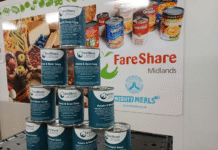Tetra Pak has launched its connected packaging platform, through which the company expects to transform milk and juice cartons into interactive information channels, full-scale data carriers and digital tools.
Driven by the trends behind Industry 4.0, and with code generation, digital printing and data management at its core, the connected packaging platform will bring new benefits to food producers, retailers and shoppers.
For producers, the new packaging platform will offer end-to-end traceability to improve the production of the product, quality control and supply chain transparency. It will have the ability to track and trace the history or location of any product, making it possible to monitor for market performance and any potential issues.
For retailers, it will offer greater supply chain visibility and real-time insights, enabling distributors to track stock movements, be alerted when issues occur, and monitor for delivery performance.
For shoppers, it will mean the ability to access vast amounts of information such as where the product was made, the farm that the ingredients came from and where the package can be recycled.
“We are unlocking new opportunities for our customers to get more value from packaging than ever before. No longer is it only about product protection and functionality, it is about connectivity. The future of packaging is undoubtedly digital: this launch is a step towards a truly intelligent package, and we are excited to collaborate with our customers on this journey,” Ivan Nesterenko, vice president, Cross Portfolio at Tetra Pak said.
Tetra Pak has successfully completed pilots with its customers to test the new connected package and its performance in retail in Spain, Russia China, the Dominican Republic and India, working with beverage, juice and milk producers.











